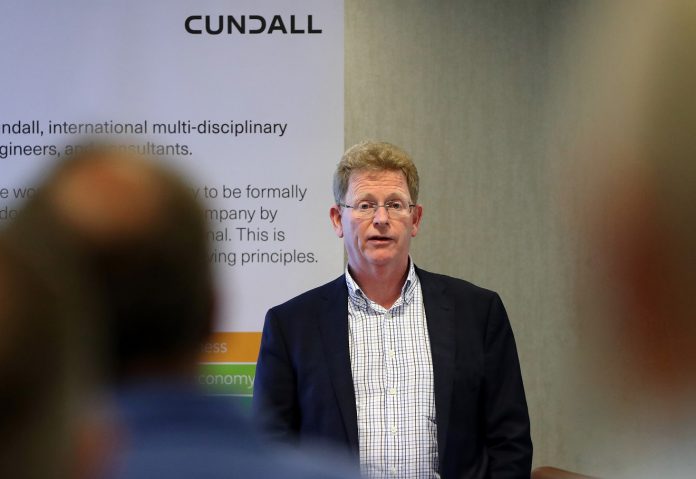
Proven methods of sustainable design from the past can point the way to the future of energy-efficient buildings, according to Alan Fogarty – Head of Cundall’s Sustainability Division.
Alan, who was recently in Belfast to give a presentation on sustainability, believes that by looking back, the industry can find an effective way forward to meet the demands of energy-efficient design.
“For example, the Victorians had a lot of this right,” he said. “You have rooms with high ceilings and full-length windows with ventilation at the top and bottom, giving you plenty of light and ventilation.
“A ceiling fan is another great example of an addition to a room that is simple and effective. These aren’t particularly innovative ideas, but the concepts are as applicable today as they were all those years ago. Sometimes, working on restoration projects gives you more of an insight into practical design and how you can adapt that to meet modern requirements.”
Alan has over 30 years of international experience stretching back to work on the Olympic Games in Sydney, Australia, and he has been working with the team in Cundall’s Belfast office on a range of projects as well as continuing various research studies looking at sustainability.
“Buildings simply need to be fit for purpose,” he explained. “If you design a space well, then people will be more comfortable and more productive. A building that is well designed from a sustainability point of view doesn’t need to look or feel any different – it just needs to be fit for purpose.
“Unfortunately, we don’t always see common sense coming to the fore when buildings are being designed and built. You have instances where windows are a main feature in a school building but then health and safety is saying you can’t open them. I’ve had other projects where the aesthetic considerations have been the driving force and, as a result, have taken away from the practicality of the building.
“In offices, the view is that you have to have 300 LUX lighting, yet that is a simplistic approach that doesn’t look at the practical needs of the users. We also have extensive use of glazing to provide more daylight, but no thought about how that is affected when users pull the blinds down to avoid glare.
Alan views regulations as a positive, but only if they’re enforced and only if architects and contractors see them as a minimum to build on rather than a lowest common denominator.
“I still think there’s a lot of work to be done with regulations,” he added, “However, too many just look at how they have to meet the minimum standard rather than looking at overall improvements. A lack of enforcement also leads to bad practice.”
While utilising proven concepts for the past is important, Alan believes that modern innovations can make a difference and he thinks that BIM can be the real game changer.
“We’re going to see a revolution in digital design and construction that is driven by BIM,” said Alan. “BIM is being adopted across the industry but it is not being used to its full potential. At the moment, BIM is seen as a new way to replace paper versions of plans and help the overall co-ordination during the design and construction phase.
“But looking ahead we will be able to use BIM to extract data about the building, how it is being used and how we can utilise the technology within it. Automated processes can be refined and we can use that data to learn lessons which can be incorporated into future designs.”
He concluded, “Everyone understands that money is a major factor in the decision-making process but, as energy consumption increases and, as a consequence, energy prices rise, then building owners will have to look at different ways to cut their costs. That is where sustainable design comes into its own and why we need more of a sense of urgency on this important issue.”







